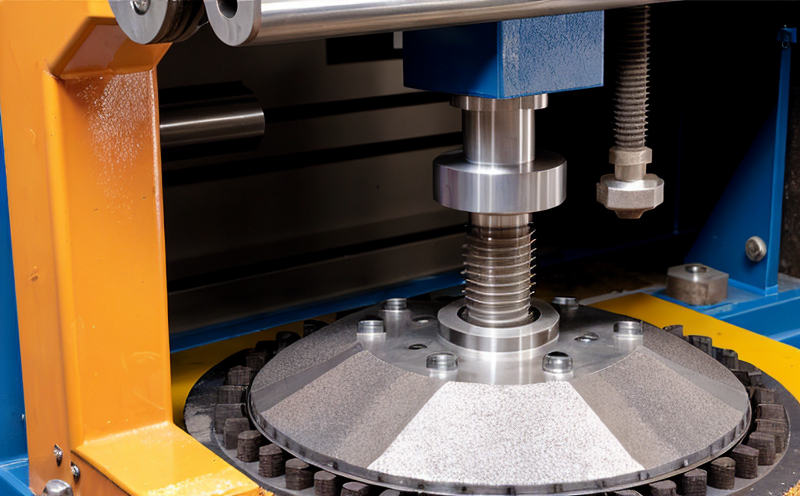EN 60068-2-64 Random Vibration Testing of HVAC Units
The European standard EN 60068-2-64 is a crucial guideline for the random vibration testing of HVAC (Heating, Ventilation, and Air Conditioning) units. This test evaluates how well HVAC equipment can withstand mechanical stress from random vibrations that they might encounter during operation in various environments.
The standard specifies procedures for applying controlled random vibration to test specimens to determine their ability to retain function and integrity under specified conditions. The primary objective is to ensure the reliability of HVAC units by simulating real-world operational stresses, thereby improving product quality and reducing maintenance costs and downtime.
Random vibration testing ensures that HVAC units can operate efficiently in environments where they are subject to varying levels of mechanical stress. This includes industrial settings, commercial buildings, and even transportation vehicles like buses or aircraft. The test helps manufacturers identify potential design flaws early on, ensuring that the final product meets all specified performance criteria.
Random vibration testing is particularly important for HVAC units because these systems must operate reliably under diverse conditions. They need to be robust enough to handle sudden changes in temperature and humidity while maintaining optimal performance levels. By subjecting them to controlled random vibrations according to EN 60068-2-64, manufacturers can verify that their products will perform consistently across different operational scenarios.
The testing process typically involves placing the HVAC unit on a vibration test rig that simulates various frequencies and amplitudes of random vibrations. The duration of exposure depends upon the specific requirements outlined in EN 60068-2-64, but it generally lasts several hours to ensure sufficient fatigue effects are observed.
After completing the test, engineers assess whether or not the unit has sustained any damage that could affect its functionality. They check for physical deformation, cracks, leaks, and other signs of wear and tear. If issues arise during testing, manufacturers can use this information to refine their designs and improve future iterations.
| Aspect | Description |
|---|---|
| Vibration Frequency Range | The test covers frequencies from 10 Hz to 2000 Hz, which are typical for HVAC units. |
| Amplitude Levels | The standard specifies three levels of amplitude: 5 g, 7.5 g, and 10 g. |
| Durability Time | This can vary based on the specific test but is often set to several hours. |
| Test Environment | The unit must be tested in a controlled environment that simulates real-world conditions. |
In summary, EN 60068-2-64 random vibration testing plays an essential role in ensuring the mechanical reliability of HVAC units. By subjecting these systems to realistic stress scenarios, manufacturers can identify potential weaknesses early on and make necessary improvements before products reach market.
Quality and Reliability Assurance
Ensuring the quality and reliability of HVAC units is paramount for any organization involved in manufacturing or purchasing these critical components. With increasing emphasis on sustainability, energy efficiency, and occupant comfort, it's more important than ever to guarantee that each unit functions optimally under all relevant conditions.
The EN 60068-2-64 random vibration test serves as a key component of this quality assurance process by providing objective data about the mechanical robustness of HVAC units. This information allows manufacturers and purchasers alike to make informed decisions regarding product selection and improvement initiatives. It also helps establish trust with end-users who rely on reliable HVAC systems for comfort, safety, and productivity.
By adhering to this international standard, organizations demonstrate their commitment to delivering high-quality products that meet strict performance criteria. This not only enhances brand reputation but also fosters long-term relationships between suppliers and customers based on mutual respect and shared goals.
Competitive Advantage and Market Impact
In today's competitive market, maintaining high standards of quality and reliability is not just advisable—it's necessary for survival. Organizations that invest in comprehensive testing protocols like those specified by EN 60068-2-64 gain several key advantages:
- Enhanced reputation: By adhering to international best practices, companies can build a strong brand image and establish themselves as leaders in their respective fields.
- Better customer satisfaction: Reliable products lead to happier customers who are less likely to experience disruptions or dissatisfaction with their HVAC systems.
- Increased sales opportunities: Demonstrating compliance with recognized standards opens doors to new markets where buyers seek assurance of consistent quality across suppliers.
The broader implications extend beyond individual entities; they contribute positively to overall industry standards and foster greater trust among stakeholders. As more organizations adopt such rigorous testing methods, the entire HVAC sector benefits from improved product performance and reduced environmental impact due to enhanced efficiency.
Use Cases and Application Examples
- Data Centers: Ensuring that air conditioning units operate efficiently despite high ambient temperatures is critical for maintaining optimal data processing conditions.
- Hospitals: HVAC systems in healthcare facilities must maintain strict temperature and humidity levels to support patient recovery and staff comfort.
- Offshore Platforms: Equipment used on platforms far from shore needs to be highly resistant to harsh environmental factors such as saltwater corrosion and extreme temperatures.
The following table provides a more detailed overview of some typical use cases for EN 60068-2-64 random vibration testing in HVAC applications:
| Use Case | Description |
|---|---|
| Data Center Cooling Systems | Critical for maintaining constant temperature and humidity levels. |
| Hospital HVAC Units | Ensures proper air quality and temperature control, which is vital for patient care. |
| Offshore Oil Platforms | Must function reliably in extreme weather conditions without failure. |
These examples illustrate the versatility and importance of EN 60068-2-64 random vibration testing across various industries. By incorporating this test into their development processes, manufacturers can ensure that their HVAC units are capable of withstanding challenging environmental conditions while delivering optimal performance.





